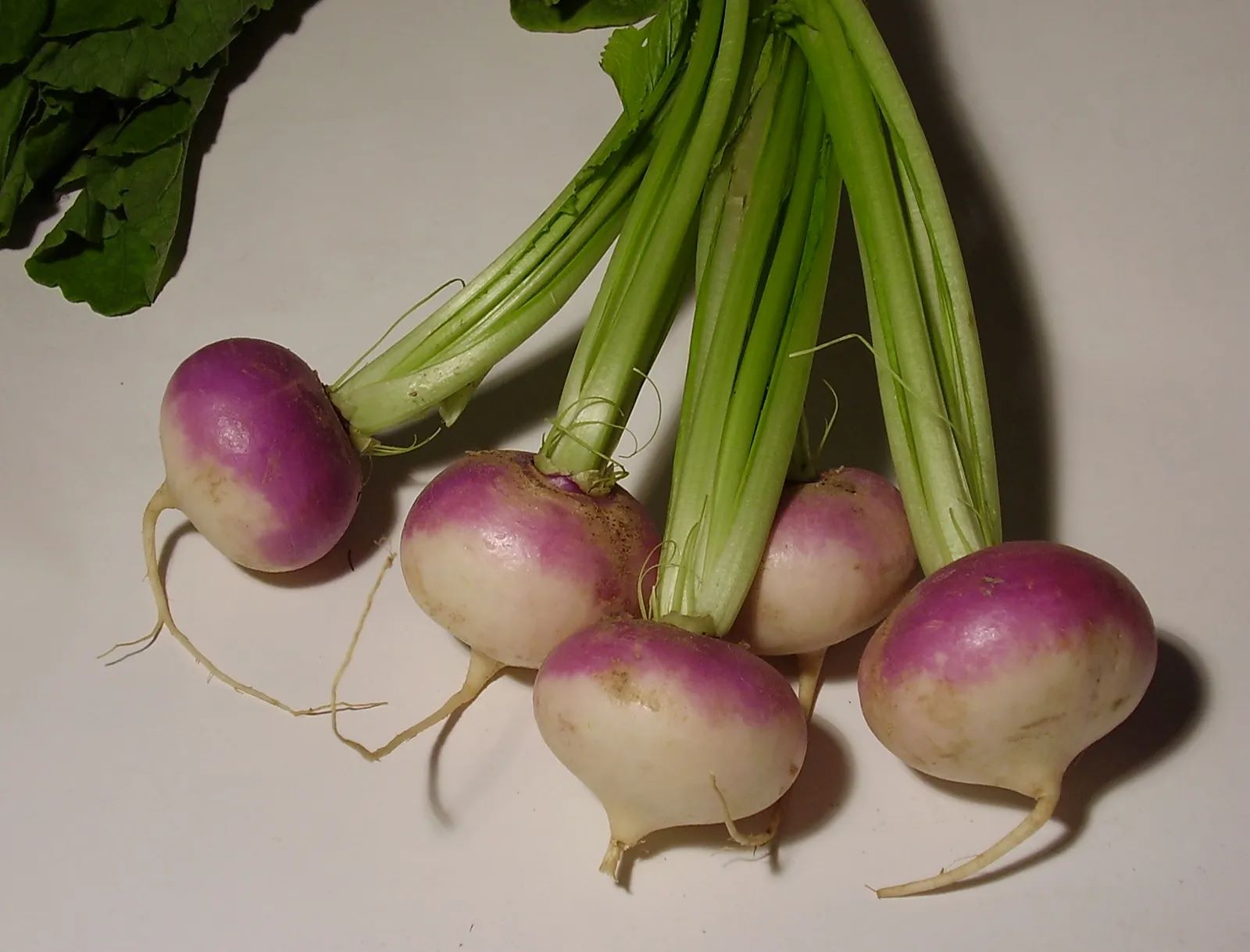
When it comes to versatile and nutritious vegetables, turnips definitely deserve a place in the spotlight. With their unique flavor and numerous health benefits, turnips have been a staple in kitchens all around the world for centuries. Whether you love them roasted, mashed, or sautéed, turnips can add a delicious twist to any dish.
In this article, we’re going to dive deeper into the world of turnips by exploring 15 fascinating facts about these root vegetables. From their rich history to their impressive nutritional profile, you’ll discover why turnips are more than just a humble vegetable. So, buckle up and get ready to learn some interesting tidbits about turnips that will make you appreciate these underrated gems even more!
Key Takeaways:
- Turnips are versatile and nutritious, offering a range of culinary possibilities from salads to main courses. Their roots and greens are packed with essential nutrients and can be enjoyed in various dishes.
- With a rich history and cultural significance, turnips have been cultivated for thousands of years and are celebrated in traditional dishes and festivals worldwide. They also offer potential health benefits and can be stored for months.
Turnips Are Root Vegetables
Turnips belong to the Brassicaceae family, which includes other vegetables like broccoli, cabbage, and radishes. They are known for their small taproot and edible bulb, which can vary in color from white to yellow to purple.
Turnips Have Been Cultivated for Thousands of Years
Turnips have a rich history and have been cultivated for over 4,000 years. They were first grown in ancient Persia and gradually spread across Europe and Asia.
They Are Nutrient Powerhouses
Turnips are packed with essential nutrients. They are an excellent source of Vitamin C, Vitamin K, fiber, and potassium. They also contain antioxidants that help boost the immune system.
Turnips Can Be Eaten Raw or Cooked
Turnips can be enjoyed in various ways. They can be consumed raw in salads, pickled, roasted, boiled, or used in stews. The cooking method can affect their taste and texture, ranging from crisp and peppery to soft and sweet.
They Have a Distinct Flavor
Turnips have a unique flavor that is often described as slightly sweet and tangy, with a mild bitterness. The taste may vary depending on the variety and cooking method.
Hybrid Varieties Have Been Developed
Over the years, hybrid turnip varieties have been developed to enhance certain traits, such as color, shape, and flavor. These hybrids offer a wider range of options for culinary use.
Turnip Greens Are Edible Too
Don’t discard the greens! Turnip greens are not only edible but also highly nutritious. They are rich in vitamins A, C, and K, as well as calcium and iron. They can be cooked similarly to spinach or added to soups and stir-fries.
Turnips Are Versatile in the Kitchen
From soups and salads to side dishes and main courses, turnips can be used in a wide variety of recipes. They can be mashed, pureed, or even substituted for potatoes in certain dishes.
Turnips Have Medicinal Properties
Turnips have been used in traditional medicine for centuries due to their potential health benefits. They are believed to have diuretic properties, aid digestion, and even help reduce the risk of certain diseases.
They Can Be Stored for Months
Turnips have a relatively long shelf life. When stored in a cool and dry place, they can last for several months. This makes them a convenient option for long-term storage and winter months.
Turnips Can Be Grown in Different Climates
Turnips are a versatile vegetable that can thrive in various climates. They are known for their ability to tolerate cold temperatures, making them an ideal crop for cooler regions.
They Are Low in Calories
If you’re looking for a low-calorie vegetable, turnips are a great choice. They are low in calories and high in fiber, making them a satisfying addition to a balanced diet.
Turnips Can Help Control Blood Sugar
Due to their high fiber content, turnips can help regulate blood sugar levels. They have a low glycemic index, which means they cause a slower and more gradual rise in blood sugar compared to high-glycemic foods.
Turnips Can Add Flavor to Your Dishes
Turnips are not only nutritious but also add a delightful flavor to various dishes. Their earthy and slightly spicy taste can enhance the overall taste profile of your culinary creations.
Turnips Have Cultural Significance
Turnips hold cultural significance in different parts of the world. They are used in traditional dishes and festivals, symbolizing good luck, prosperity, and fertility in some cultures.
Conclusion
Turnips are a versatile and nutritious vegetable that have been enjoyed by people for centuries. From their rich history to their nutritional benefits, turnips have a lot to offer. Whether you enjoy them roasted, mashed, or in a stew, turnips add a unique flavor and texture to any dish. So next time you are at the grocery store, don’t forget to pick up some fresh turnips and explore the many delicious ways to incorporate them into your meals.
FAQs
1. How do I store turnips?
Turnips can be stored in the refrigerator for up to a week. Cut off the leafy greens, store them separately, and place the turnips in a plastic bag or container.
2. Can I eat turnip greens?
Absolutely! Turnip greens are edible and highly nutritious. You can sauté them, add them to soups or stews, or use them in salads.
3. Are turnips a good source of vitamins and minerals?
Yes, turnips are packed with essential nutrients. They are rich in vitamins C, K, and E, as well as folate, calcium, and potassium.
4. How can I incorporate turnips into my diet?
Turnips can be enjoyed in various ways. You can roast them as a side dish, mash them as an alternative to potatoes, or add them to soups, stews, and stir-fries.
5. Are turnips low in calories?
Yes, turnips are relatively low in calories. One cup of cooked turnips contains just around 55 calories, making them a great addition to a balanced diet.
Turnips offer a wealth of nutritional benefits and culinary possibilities. Exploring their rich history reveals how turnips have been cultivated for thousands of years across various cultures. Beyond turnips, many other vegetables hide fascinating facts waiting to be uncovered. Kohlrabi, a lesser-known relative of cabbage and broccoli, boasts its own unique set of characteristics and culinary uses. Delving into the world of uncommon vegetables like kohlrabi can expand your knowledge and inspire new adventures in the kitchen. Embrace the opportunity to learn more about these intriguing plants and elevate your culinary repertoire.
Was this page helpful?
Our commitment to delivering trustworthy and engaging content is at the heart of what we do. Each fact on our site is contributed by real users like you, bringing a wealth of diverse insights and information. To ensure the highest standards of accuracy and reliability, our dedicated editors meticulously review each submission. This process guarantees that the facts we share are not only fascinating but also credible. Trust in our commitment to quality and authenticity as you explore and learn with us.


